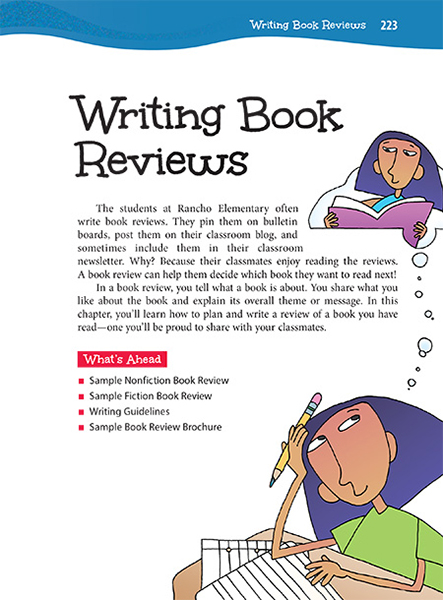Page 223 from

Start-Up Activity
Make a list of your three favorite books. For each book, identify two or three things you like about it. Share your list with your class. Then have your students list their three favorite books and what they liked about each. Point out that these thoughts could be used in a book review. Then ask if there was anything students didn't like about one of the books. Note that a criticism also could be part of a book review.
Think About It
“There are books of which the backs and covers are by far the best parts.”
—Charles Dickens

Start-Up Activity
Make a list of your three favorite books. For each book, identify two or three things you like about it. Share your list with your class. Then have your students list their three favorite books and what they liked about each. Point out that these thoughts could be used in a book review. Then ask if there was anything students didn't like about one of the books. Note that a criticism also could be part of a book review.
Think About It
“There are books of which the backs and covers are by far the best parts.”
—Charles Dickens
